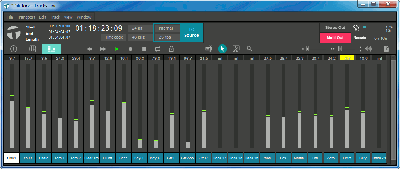

Your audience (hopefully) aren’t going to hear it, and in this lies a few advantages.įirst, is that your click track can be whatever you want it to be. Our click track has quarter and eighth-note pulses, with an indicator of the first beat of each bar (Image credit: Future)Ī click track is there to do one thing, and that’s keep you in time with the backing track. So, come up with a formula that works for you, add a couple of bars’ of empty space to your backing track before anything happens and stick to it for each song so that there are no surprises. If another live instrument or vocal is the sound that starts the song off, you’re still going to have to give them a count-in to make sure that everything syncs up. Now, it’s up to you whether this count in is purely for you - a count-in for your count-in, if you like - but it’s worth giving yourself enough time to bed-in to the tempo of the song before the backing track kicks in. This means that regardless of how the song starts (a guitar intro, vocal line, drum beat etc.) you should add a count-in of the same length to each track. A band member hopefully wouldn’t start playing if you’re not ready, but your click track won’t be that forgiving once you’ve pressed play. So, at this stage it’s worth creating some workflow ‘rules’ to follow that can apply to your tracks. Here, we've given ourselves two bars of click before the backing track starts (Image credit: Future)Īs the drummer, you’re probably the only band member who will actually have the click track piped into your ears, but you’re certainly the one person who will need it.

The point is, you need the musical elements before you can play them back. You can make it yourself or with your bandmates using a DAW, buy a commercial, customised backing track if it’s a cover, or if you’re using sounds that feature on a recording you’ve already made, speak to the person who recorded or mixed it/open the project yourself (if that’s you) and start muting the bits you don’t want on your track. It could be that you need some electronic loops that appear for a few bars every chorus, a complete keyboard part, sound effects that aren’t possible to recreate in a band setup or anything in between/beyond. The nature of what goes on the track is most likely already decided (given that you’re already considering it). In order to make everything work- regardless of the technology you’re using to play it back - you’re going to need two things: a track packed with the sounds you want the audience to hear and a corresponding click track for you to lock into. Arrange the musical elements of your backing track in your DAW (Image credit: Apple)Īssuming you’re now like a hand in a glove with your metronome, it’s time to look at the songs you’re going to play live to a click.


 0 kommentar(er)
0 kommentar(er)
